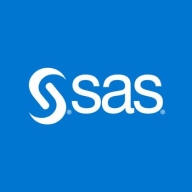

Teradata and SAS Data Integration Server both compete in the data integration market, offering robust solutions for managing complex data environments. Teradata stands out for its scalability and analysis capabilities, while SAS Data Integration Server is favored for its comprehensive feature set and integration capabilities.
Features: Teradata focuses on data warehousing and analytics, emphasizing high performance and scalability as well as support for in-database analytics. SAS Data Integration Server includes a suite of tools for data management, transformation, and cleansing, offering a broad approach to data integration.
Ease of Deployment and Customer Service: Teradata provides a streamlined deployment process with strong support options, preferred by organizations needing quick integration. SAS Data Integration Server involves a more complex deployment but compensates with robust integration tools and customer service tailored to enterprise needs.
Pricing and ROI: Teradata offers competitive pricing with attractive ROI due to its efficiency in handling large datasets. SAS Data Integration Server may have higher initial costs but its functionality can justify the expense, offering strong ROI in environments where detailed data management is critical.
| Product | Market Share (%) |
|---|---|
| Teradata | 0.8% |
| SAS Data Integration Server | 0.6% |
| Other | 98.6% |

| Company Size | Count |
|---|---|
| Small Business | 26 |
| Midsize Enterprise | 12 |
| Large Enterprise | 49 |
Teradata is a powerful tool for handling substantial data volumes with its parallel processing architecture, supporting both cloud and on-premise environments efficiently. It offers impressive capabilities for fast query processing, data integration, and real-time reporting, making it suitable for diverse industrial applications.
Known for its robust parallel processing capabilities, Teradata effectively manages large datasets and provides adaptable deployment across cloud and on-premise setups. It enhances performance and scalability with features like advanced query tuning, workload management, and strong security. Users appreciate its ease of use and automation features which support real-time data reporting. The optimizer and intelligent partitioning help improve query speed and efficiency, while multi-temperature data management optimizes data handling.
What are the key features of Teradata?In the finance, retail, and government sectors, Teradata is employed for data warehousing, business intelligence, and analytical processing. It handles vast datasets for activities like customer behavior modeling and enterprise data integration. Supporting efficient reporting and analytics, Teradata enhances data storage and processing, whether deployed on-premise or on cloud platforms.
We monitor all Data Integration reviews to prevent fraudulent reviews and keep review quality high. We do not post reviews by company employees or direct competitors. We validate each review for authenticity via cross-reference with LinkedIn, and personal follow-up with the reviewer when necessary.